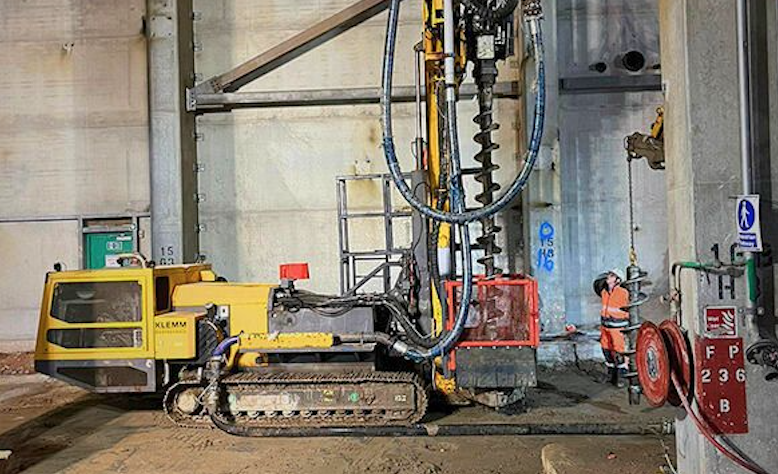We’ve taken a closer look at one of our specialised techniques, Mini Piling. Ideal for sites with restricted access or low headroom. Whether you’re a homeowner looking to reinforce your foundation or a contractor seeking efficient piling methods, understanding these common queries about Mini Piling will help you make informed decisions. Let’s dive in!
1. What is Mini Piling?
Mini piling is a foundation solution that uses smaller diameter piles, typically ranging from 100mm to 300mm, but can extend up to 600mm diameter. Mini piles are suitable for sites with restricted access, limited headroom or where ground conditions are challenging. The smaller equipment and piles allow for installation in confined spaces, making mini piling ideal for urban areas, basements and refurbishment projects.
Why Choose Mini Piling?
· Versatility: Suitable for a wide range of ground conditions.
· Accessibility: Perfect for sites with limited access.
· Less Disruptive: Minimizes vibration and noise, making it ideal for sensitive areas.
2. How Does Mini Piling Work?
Mini piling involves driving or drilling small-diameter piles into the ground. The process starts with a small rig, which can access or be lifted into restricted spaces. Piles can be installed using various techniques, including driven, augered, or drilled methods, depending on the soil conditions and project requirements.
Key Techniques:
· Driven Mini Piles: Installed by driving preformed piles (typically steel tubes) into the ground, additional sections are welded on the pile driving progresses until design depth or sufficient resistance is achieved, these can then be reinforced and then filled with concrete.
· Augered Mini Piles: A hollow or solid stem is bored into the ground using an auger and then filled with concrete or grout and reinforcement is plunged into the concrete.
· Drilled Mini Piles: Like augered piles but often used for deeper installations or sockets into rock can be cased in unstable ground conditions, reinforcement is then installed, and grout/concrete is pumped to finish the pile.
· Screw Piles: installation is via an excavator or mini rig that screws preformed steel screw piles into the ground, additional sections can be added on until the required design depth is achieved.
3. What are the Advantages of Mini Piling?
Mini piling offers several benefits that make it a preferred choice for various projects. Here are some of the main advantages:
· Flexibility: Can be used in a variety of soil types and difficult site conditions.
· Environmental Impact: Generates less noise and vibration, reducing the impact on surrounding structures and the environment, than more conventional larger piling plant.
· Small Equipment: Mini Piling’s main benefit is the size of the equipment used, making it perfect for limited headroom or restricted access projects.
4. What is SFA Piling, and How Does it Relate to Mini Piling?
SFA (Sectional Flight Auger) piling is a specific type of mini piling. It involves using segmental augers that are added section by section until the required design depth is achieved. This method is particularly useful in areas with low headroom or restricted access and looks to achieve similar results to continuous flight auger piling, maintaining quality despite project access constraints.
SFA Piling Benefits:

· Low Headroom: Ideal for use in basements and areas with overhead restrictions.
· Precision: Allows for accurate installation in confined spaces.
· Efficiency: Can be installed quickly, reducing project timelines.
· Versatility: By adding augers on section by section with modern powerful mini rigs depths comparable with large CFA machines can be achieved in restricted environments.
5. When Should I Consider Using Mini Piling?
Mini piling is a versatile solution suitable for a variety of situations. Consider mini piling for your project if:
· Restricted Access: Your site has limited space or headroom for larger equipment.
· Urban Areas: You need to minimize noise and vibration.
· Challenging Ground Conditions: The soil is unstable or has high water tables.
· Refurbishment Projects: You are working on or inside existing structures where traditional piling isn’t feasible.
Common Applications:
· Residential buildings.
· Commercial properties.
· Infrastructure projects like bridges and tunnels.
· Historic building renovations.
· Retrofitted Mezzanine Floors
· Repurposing of industrial/warehouse buildings for change of use
Conclusion
Mini piling is an innovative and efficient foundation solution that addresses many modern construction challenges. Its versatility, cost-effectiveness, and minimal environmental impact make it an excellent choice for a wide range of projects.
At Aarsleff Ground Engineering, we’re committed to providing top-quality solutions tailored to your specific needs. Contact us today to speak to an expert about your project or to learn more!
For more information visit Aarsleff Ground Engineering This article was paid for by Aarsleff Ground Engineering.

